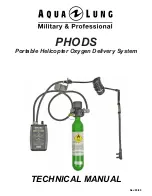
09.07.2020
MÜLLER + ZIEGLER GmbH, Industriestr. 23, D-91710 Gunzenhausen
Tel. +49 (0) 98 31.50 04 0, Fax +49 (0) 98 31.50 04 20
Messwertabfrage mit TCP/IP-Protokoll
Die Messwerte des EZD-TCP können per TCP/IP-Protokoll ausgelesen werden. Verbinden Sie
den Zähler mit einem Crossover-LAN-Kabel (Zubehör) mit Ihrem PC. Bei der TCP-Abfrage
öffnen Sie einen TCP/IP Client an Ihrem PC. Die Adressierung des EZD-TCP erfolgt über
seinen Hostnamen (z.B. 192.168.2.2“ oder
„
EZD-TCP
“) und den Port mit der Nummer 9760.
Die Daten sind in 2 Datenpakete aufgeteilt. Im ersten Teil sind die Momentanwerte
enthalten und im zweiten Teil die Energieregisterwerte und die Konfigurationsdaten. Für
den ersten Teil senden Sie ein TCP/IP Datenpaket mit folgenden Hex-Werten {0xBD 0x57}.
Für den zweiten Teil senden Sie ein TCP/IP Datenpaket mit folgenden Hex-Werten {0xBE
0x58}.
Das kleinste Intervall zum Auslesen der Messwerte sollte nicht kleiner als 1 Sekunde sein.
Der erste Teil der Daten mit den Messwerten hat eine Größe von 326 Byte, der zweite Teil
hat 389 Byte. Alle Messwerte werden im ASCII-Format ausgegeben und sind mit der
entsprechenden Einheit versehen. Die einzelnen Werte sind durch Semikolon (0x3B)
voneinander getrennt. Das letzte Zeichen in dem Datenstring ist ein Leerzeichen (0x00).
Kommastellen in den Messwerten werden mit einem Punkt (0x2E) dargestellt. Durch das
ASCII-Format und die Trennung der Werte durch ein Semikolon, ist eine Weiterverarbeitung
der Messwerte sehr einfach. Die Anordnung der Messwerte in den Datenstrings ist wie folgt:
Anordnung der Messwerte 1.Teil
Wert
Byteanzahl
Mögliche Werte
Spannung L1-N
6
Einheit Spannung L1-N
2
V, kV
Spannung L2-N
6
Einheit Spannung L2-N
2
V, kV
Spannung L3-N
6
Einheit Spannung L3-N
2
V, kV
Spannung L1-L2
6
Einheit Spannung L1-L2
2
V, kV
Spannung L2-L3
6
Einheit Spannung L2-L3
2
V, kV
Spannung L1-L3
6
Einheit Spannung L1-L3
2
V, kV
Strom L1
8
Einheit Strom L1
1
A
Strom L2
8
Einheit Strom L2
1
A
Strom L3
8
Einheit Strom L3
1
A
Strom N
8
Einheit Strom N
1
A
Frequenz L1
6
Einheit Frequenz L1
2
Hz
Frequenz L2
6
Einheit Frequenz L2
2
Hz
Frequenz L3
6
Einheit Frequenz L3
2
Hz
Wirkleistung L1
8
Einheit Wirkleistung L1
2
W, kW, MW
Wirkleistung L2
8
Einheit Wirkleistung L2
2
W, kW, MW
Wirkleistung L3
8
Einheit Wirkleistung L3
2
W, kW, MW
Wirkleistung Summe
8
Einheit Wirkleistung Summe
2
W, kW, MW
Blindleistung L1
8
Einheit Blindleistung L1
4
Var, kvar, Mvar
Blindleistung L2
8
Einheit Blindleistung L2
4
Var, kvar, Mvar
Blindleistung L3
8
Einheit Blindleistung L3
4
Var, kvar, Mvar
Blindleistung Summe
8
Einheit Blindleistung Summe
4
Var, kvar, Mvar
Scheinleistung L1
8
Einheit Scheinleistung L1
3
VA, kVA, MVA
Scheinleistung L2
8
Einheit Scheinleistung L2
3
VA, kVA, MVA
Scheinleistung L3
8
Einheit Scheinleistung L3
3
VA, kVA, MVA
Scheinleistung Summe
8
Einheit Scheinleistung Summe
3
VA, kVA, MVA
Leistungsfaktor L1
4
Measured value queries with the TCP/IP-protocol
The measured values of the EZD-TCP can be read out using the TCP/IP -protocol. Use a
crossover-LAN cable (accessory) to connect the counter to your PC. With the TCP query,
open a TCP/IP client on your PC. The addressing of the EZD-TCP is via its host name (e.g.
192.168.2.2 or e.g." EZD-TCP ") and the port numbered 9760. The data is divided into 2 data
packets. The first part contains the instantaneous values and the second part contains the
energy register values and the configuration data. For the first part send a TCP/IP data
packet with the following hex values {0xBD 0x57}. For the second part send a TCP/IP data
packet with the following hex values {0xBE 0x58}.
The smallest interval for reading out the values should not be less than 1 second. The first
part of the data with the measured values has a size of 326 bytes, the second part has 389
bytes. All measured values are output in ASCII format along with the associated unit.
Individual measured values are separated by the semicolon sign (0x3B). The last character
in the file is a blank (0x00). Decimal places in the measured values are indicated with a dot
(0x2E). By virtue of the ASCII format and semicolon-separation of values, it is very easy to
further process the measured values. The arrangement of the measured values in the data
strings is as follows:
arrangement of the measured values part 1
value
bytecount
possible values
voltage L1-N
6
unit voltage L1-N
2
V, kV
voltage L2-N
6
unit voltage L2-N
2
V, kV
voltage L3-N
6
unit voltage L3-N
2
V, kV
voltage L1-L2
6
unit voltage L1-L2
2
V, kV
voltage L2-L3
6
unit voltage L2-L3
2
V, kV
voltage L1-L3
6
unit voltage L1-L3
2
V, kV
current L1
8
unit current L1
1
A
current L2
8
unit current L2
1
A
current L3
8
unit current L3
1
A
current N
8
unit current N
1
A
Frequenz L1
6
unit frequency L1
2
Hz
frequency L2
6
unit frequency L2
2
Hz
frequency L3
6
unit frequency L3
2
Hz
active power L1
8
unit active power L1
2
W, kW, MW
active power L2
8
unit active power L2
2
W, kW, MW
active power L3
8
unit active power L3
2
W, kW, MW
active power total
8
unit active power total
2
W, kW, MW
reactive power L1
8
unit reactive power L1
4
Var, kvar, Mvar
reactive power L2
8
unit reactive power L2
4
Var, kvar, Mvar
reactive power L3
8
unit reactive power L3
4
Var, kvar, Mvar
reactive power total
8
unit reactive power total
4
Var, kvar, Mvar
apparent power L1
8
unit apparent power L1
3
VA, kVA, MVA
apparent power L2
8
unit apparent power L2
3
VA, kVA, MVA
apparent power L3
8
unit apparent power L3
3
VA, kVA, MVA
apparent power total
8
unit apparent power total
3
VA, kVA, MVA
power factor L1
4

























